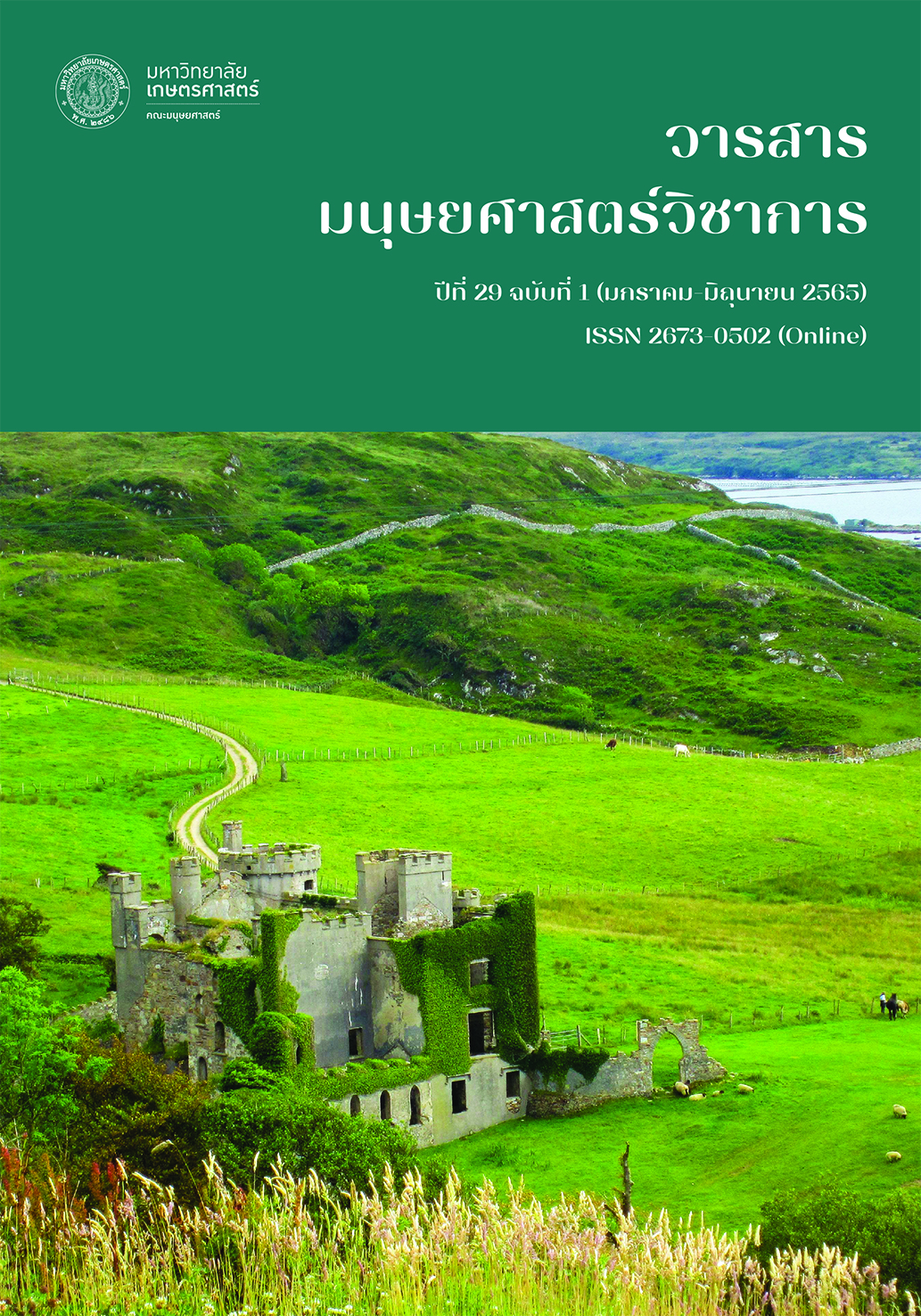The Study of Creative Tourism Activities for Promoting the Rangchorake Canal Community in Sena District, Phranakhon Sri Ayutthaya Province
Main Article Content
Abstract
The aims of this research are to 1) study of creative tourism activities in Rangchorakhe canal community, and 2) to propose a guideline for promoting tourism in Rangchorakhe canal community. The researchers used mixed method designs. In qualitative research, there were four instruments used: participatory observations, in-depth interviews, experiments on creative tourism activities, and evaluation of creative tourism activities. In quantitative research, a questionnaire for tourist’s opinions on creative tourism activities was used as an instrument. The results of the research were found that the community had cultural and natural capitals appropriate for tourism. There is a unique local food. The community cooperates in organizing creative tourism activities 2 days 1 night with the research team. In evaluating tourism activities from experts, it was found that community readiness should be improved, cleanliness and orderliness of homestays. The tourism activities were good activities with the local characteristics that make tourists impressed. For the quantitative research, it was found that most of the tourists were female (60 percent), aged between 41 to 50 years old (46.66 percent), single (66.67 percent), with bachelor’s degree (53.33 percent), in private companies (40.00 percent) and they have monthly income from 45,001 bath onwards (33.33 percent). Tourists were mostly interested in cruising lifestyle along the canal (53.33 percent). Tourists perceive the needs of the five components of creative tourism: welcoming of people in the community were the highest (mean 4.51), followed by tourism with sustainability in mind were high (mean 4.07), learning and participation in art, culture, way of life, wisdom, and local identity were high (mean 4.00), and engagement of tourists with homeowners from tourism activities were high (mean 3.89).
Article Details

This work is licensed under a Creative Commons Attribution-NonCommercial-NoDerivatives 4.0 International License.
References
กรมการท่องเที่ยว. (2560). คู่มือการบริหารจัดการแหล่งท่องเที่ยวเชิงสร้างสรรค์ (Creative Tourism Destination Management). กรุงเทพฯ: กระทรวงการท่องเที่ยวและกีฬา.
กรมการพัฒนาชุมชน. (2563). คู่มือบริหารโครงการชุมชนท่องเที่ยว OTOP นวัตวิถี. สืบค้นเมื่อ 16 เมษายน 2563 จาก oic.go.th/fileweb/cabinfocenter3/drawer051/general/data0000/ 00000042.pdf.
กระทรวงการท่องเที่ยวและกีฬา. (2563). คลองรางจระเข้โฮมสเตย์. สืบค้นเมื่อ 18 สิงหาคม 2563 จาก thailandtourismdirectory.go.th/th/info/attraction/detail/itemid/2568.
คณะกรรมการนโยบายการท่องเที่ยวแห่งชาติ. (2559). เกณฑ์การพัฒนาการท่องเที่ยวโดยชุมชนของประเทศไทย. กรุงเทพฯ: กรรมการนโยบายการท่องเที่ยวแห่งชาติ.
ฉัตรศิริ ปิยะพิมลสิทธิ์. (2554). การสุ่มตัวอย่าง (Sampling). สืบค้นเมื่อ 2 กันยายน 2554 จาก http://www.watpon.com/Elearning/res22.htm.
ณรงค์ โพธิ์พฤกษานันท์. (2551). ระเบียบวิธีวิจัย Research Methodology (พิมพ์ครั้งที่ 5). กรุงเทพฯ: ส. เอเซียเพรส (1989).
ไทยตำบลดอทคอม. (2563). ข้อมูลตำบลรางจระเข้. สืบค้นเมื่อ 18 สิงหาคม 2563 จาก thaitambon.com/tambon/141209.
นาฬิกอติภัค แสงสนิท. (2562). นิยาม “การท่องเที่ยวเชิงสร้างสรรค์”. องค์การบริหารการพัฒนาพื้นที่พิเศษเพื่อการท่องเที่ยวอย่างยั่งยืน (องค์การมหาชน).
สืบค้นเมื่อ 14 กรกฎาคม 2562 จาก http://www.dasta.or.th/creativetourism/th/creativetourism/531.html.
ปิรันธ์ ชิณโชติ และธีระวัฒน์ จันทึก. (2559). รูปแบบการจัดการการท่องเที่ยวเชิงสร้างสรรค์ของสวนผึ้ง. วารสารศิลปากร, 9(1), 250-268.
ยุทธศักดิ์ สุภสร. (2563). การนำเสนอทิศทางการส่งเสริมการท่องเที่ยวของ ททท. ปี 2563. สืบค้นเมื่อ 9 เมษายน 2563 จาก tatreviewmagazine.com/article/tourism-direction- 2020/.
สถาบันการท่องเที่ยวโดยชุมชน. (2559). CBT การท่องเที่ยวโดยชุมชนเพื่อชุมชน. สืบค้นเมื่อ วันที่ 5 สิงหาคม 2563 จาก thaihealthcommunity.org.
สุดแดน วิสุทธิลักษณ์. (2558). องค์ความรู้ของการท่องเที่ยวเชิงสร้างสรรค์: คู่มือและแนวทางปฏิบัติ. กรุงเทพฯ: องค์การบริหารการพัฒนาพื้นที่พิเศษเพื่อการท่องเที่ยวอย่างยั่งยืน (องค์การมหาชน).
สำนักงานคณะกรรมการพัฒนาการเศรษฐกิจและสังคมแห่งชาติ สำนักนายกรัฐมนตรี. (2563). แผนพัฒนาเศรษฐกิจและสังคมแห่งชาติฉบับที่ 12 พ.ศ. 2560-2564. สืบค้นเมื่อ 9 เมษายน 2563 จาก onwr.go.th/? page id=4172.
ห้าวหาญ ทวีเส้ง. (2555). การพัฒนาการท่องเที่ยวเชิงสร้างสรรค์: กรณีศึกษาศูนย์กลางเศรษฐกิจนก เทศบาลนครยะลา (วิทยานิพนธ์มหาบัณฑิต สาขาการจัดการการท่องเที่ยว), มหาวิทยาลัยสงขลานครินทร์, สงขลา.
องค์การบริหารการพัฒนาพื้นที่พิเศษเพื่อการท่องเที่ยวอย่างยั่งยืน. (2556). การท่องเที่ยวเชิงสร้างสรรค์. สืบค้นเมื่อ 14 กรกฎาคม 2560 จาก http://www.dasta.or.th/creativetourism/article/155-notice3/.html.
Jongwon Lee, Heeseok Lee. (2015). Deriving Strategic Priority of Policies for Creative Tourism Industry in Korea using AHP. Procedia Computer Science Elsevier B.V., 479-484. Retrieved March 1, 2020, from www.sciencedirect.com.
Wu Chen-Yi, Lee Chen-Jai and Jian Titan Bo-Xiu. (2017). Authenticity: Creative Tourism and Large Variation of Community. Athens Journal of Tourism, 4(2), 125-146. Retrieved March 14, 2020, from https://doi.org/10.30958/ajt.4.2.3.


